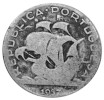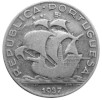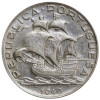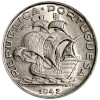Help
Frequent Asked Questions
What’s my coin worth?
Although it is common to believe that coins are a fortune, not all coins have significant value.
A coin value is directly linked to the law of demand and supply. It depends mainly on the rarity and its preservation conditions. The more difficult to find, the higher its value. Well preserved coins are more valuable.
Few coins may be worth a fortune due to their rarity, if you find a buyer. However, most coins were issued in high quantities, which is the case of Portuguese Escudos. It is easy to find these coins in well preserved conditions, thus not so many collectors are interested in buying them.
The condition of a coin is a key factor. The better preserved and close to its original state, the higher the value. Coins that are damaged, cleaned, polished or very worn are worthless for collectors. Beginners may do the mistake of polishing their coins to bring back their shinning looking. By doing that, they are exposing the metal to the elements and exposing highlighting any defect.
The amount of people trying to sell their, or inherited, coins has increased in the last years. Either due to the recent economic crisis or because there’s less and less people interested in collecting. As a result the supply is higher than the demand. It is not easy to find buyers for regular coins.
How can I find the value of my coins?
This site was created exactly to answer that question. Here you can find the value of Portuguese Coins. To know how to evaluate the preservation condition of your coins, please read the sections below where you can find a detailed description of the coin grades.
You can also visit numismatics shops and ask for a quote.
How can I sell my coins?
The most profitable way is to sell your coins individually by their fair value. You can do it in action websites like eBay, olx, catawiki, facebook marketplace, etc. However you may not be able to sell all your coins, due to the reasons explained above.
If you prefer selling the whole collection, then you can try to make a deal in numismatics or antique shops. Although by this method, the offers will be underrated.
Quality Grading
 | G (Good) – Rims of the coin are slightly worn, design is visible but faint in areas with many parts of the coin worn flat. Peripheral lettering nearly full. |
 | F (Fine) – Some deeply recessed areas with detail, all lettering is sharp, Lettering is complete but may be weak. Moderate to considerable even wear throughout the coin. |
 | VF (Very Fine) – All lettering and major features are sharp, light to moderate even wear is seen on the surface and high points of the coin. |
 | UNC (Uncirculated) – Coin which was not used or has not been in circulation yet, and thus can be described as Mint State. |
FDC (Fleur de Coin) – The perfect coin, as minted. Has no trace of wear, handling, scratches or contact with other coins.
BU (Brilliant Uncirculated) – Brilliant Uncirculated coins are a higher standard than circulating coins. They’re given a consistent polished finish with none of the additional frosting that is applied to Proof coins. These coins are usually issued for collectors.
PROOF – Proof coins are specially produced to a much higher standard of finish. A proof coin is made with a specially polished and treated die. These coins are usually issued for collectors.
Rarity Grading
R – Rare
RR – Very rare
RRR – Extremely rare
Die Axis Alignment
VA (Vertical Axis) – Also know as medal alignment. A coin has a vertical axis if both sides of the coin are the right way up when flipping the coin through a vertical axis.
HA (Horizontal Axis) – Also known as coin alignment. A coin has a horizontal axis if both sides of the coin are the right way up when flipping the coin through a horizontal axis.
Edge
Plain – A plain edge has no marking of any kind, applied with a simple flat collar die.
Grooved – A grooved edge is plain, but has a deep score or groove halfway across, all the way around the rim like two coins glued together.
Milled (or reeded) – A milled edge has fine serrations like a file, all the way around the rim. Normally the reeding is vertical.
Lettered (or inscribed) – An inscribed edge has text around the rim.
Decorated – A decorated edge is similar to the inscribed edge, but patterns and symbols instead of letters are used.
Interrupted milled (or reeded) – An interrupted milled edge has alternating sections of reeded and plain edge.
